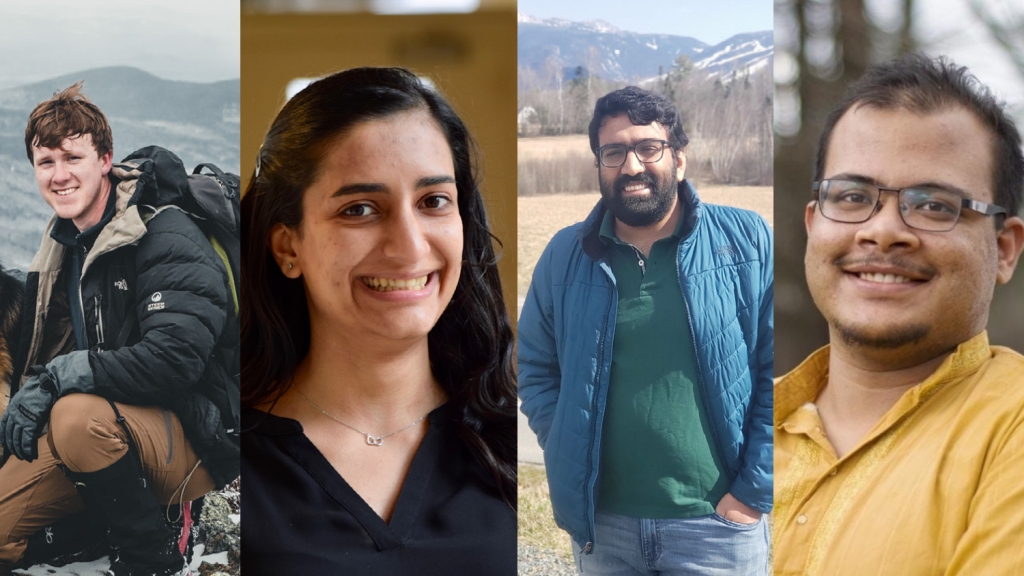Taylor Hardin
Recent PhD graduate Taylor Hardin spent the last six years working with Professor David Kotz on securing mobile health (mHealth) devices and their data. These include devices like smartphones, wearable sensors, and portable medical devices that can track and record data as well as provide healthcare guidance to users.
Hardin began his PhD working on project Amulet—an ultra-low-power watch that monitors different aspects of users' health (e.g., heartrate, temperature)—where he developed a memory-management scheme to protect the integrity and confidentiality of an application's code and data.
More recently, Hardin designed a system called Amanuensis to facilitate confidential and verifiable computations on sensitive mHealth data. The system uses a blockchain to record and enforce data-access policies, removing the need to trust a single entity with gate-keeping the health data. Data access and computation take place inside of a secure area known as a Trusted Execution Environment to preserve data confidentiality.
This summer Hardin will join a startup, Blocky Inc., where he hopes to further investigate issues related to confidential computing. When he's not working, Hardin says, "you'll most likely find me chasing squirrels with my dog out on the trails in Boston Lot or shredding some of that sweet east coast ice at the Skiway."
Maryam Negahbani
Maryam Negahbani works in the area of approximation algorithms and combinatorial optimization, with a focus on clustering algorithms.
Clustering is a way of grouping items in a dataset into groups called clusters, based on a pair-wise similarity measure. It has various applications from fraud detection in financial transactions and anomaly detection in networks, to compiling recommendations in a newsfeed or a streaming platform. Negahbani designs and analyzes algorithms for clustering and its variations such as clustering with fairness constraints and/or in presence of outliers.
As machine learning algorithms are used for making decisions in many critical applications, there is a rapidly growing literature on designing fair algorithms. Negahbani has contributed to this movement by designing provably fair algorithms for clustering, that make sure the output is not biased towards or against a group in the population.
Outliers are extreme or anomalous values in a dataset that may have been introduced by an adversary, due to novelties in the data or various sources of errors in data production and collection. The presence of outliers can deform the algorithm's solution and arbitrarily deteriorate its quality. Negahbani and her collaborators have addressed many outlier detection problems in clustering, some of which provably give the best possible results.
Negahbani is headed to Katana Graph where she will work as a Machine Learning Research Engineer to design machine learning algorithms for inferring information from data produced in fields like biology and finance.
Prashant Anantharaman
Whether it is mega-infrastructures like power grids that bring electricity to our homes, life-saving medical devices like insulin pumps, or voice-based assistants like Alexa, internet-connected devices used by millions everyday are powered by software systems. An unfortunate yet inevitable reality of this software-dependent, interconnected world is that no software can ever be completely free from vulnerabilities.
These vulnerabilities may cause programs to crash or produce incorrect outputs, which can be undesirable and frustrating to the user. The more alarming concern is that an adversary can exploit the vulnerabilities to gain access to the user's devices.
Prashant Anantharaman's research focuses on building tools to identify exploits that can leverage errors in software programs. In doing so, his work allows programmers to create more resilient software.
In 2018, Anantharaman and his collaborators at SRI International built a computational tool to identify adversarial actions in a power grid. Exploits in a power grid network can lead to blackouts in large geographical areas as big as the New England area. Their program defines what are valid messages on a power grid network, in order to identify attacker-triggered and malformed messages. It was deployed to real-world power grid substations and successfully identified intrusions.
File formats present another avenue for exploits and malware. For example, attachments may contain Portable Document Format (PDF) files containing some code that an adversary inserted. Anantharaman and his collaborators built a tool to identify PDFs that may be malformed, leading changes to the official PDF specification.
Anantharaman will be joining Narf Industries as a Senior Security Researcher in July. When he is not sitting in front of a Linux terminal, he likes to watch and play soccer. He also enjoys hiking in summer and fall. Mt. Cardigan is his go-to hike with any friend visiting the area.
Prantar Ghosh
Prantar Ghosh's research is broadly on theoretical computer science, and more specifically on the design of algorithms. The two most popular measures of efficiency of an algorithm are its running time and its memory or space usage. His work focuses on optimizing the latter.
The study of memory-efficient algorithms is especially motivated by big data. Such datasets are often structured in such a way that they are easy to represent using graphs. The growth of massive data has given rise to big graphs, which have been a special focus of Ghosh's research.
These big graphs pose intriguing challenges: to solve a problem, it is hardly feasible to have the whole input graph in store because of its large size. An approach that overcomes this challenge reads the graph as a 'stream' or sequence of edges while maintaining a summary of it that fits in small or affordable memory.
Ghosh's dissertation work has centered on developing graph-streaming algorithms that employ strategies to appropriately summarize the graph based on the problem at hand. Further, he has established lower bounds, proving the minimum space required for any algorithm that solves certain problems. In his dissertation, he has also devised efficient protocols to verify purported solutions to a variety of graph streaming problems.
Ghosh, who likes to cook, go on long drives, and play board games when he is not thinking about streaming graphs, is headed to Rutgers University to begin his stint as a Simons Postdoctoral Leader in September.
